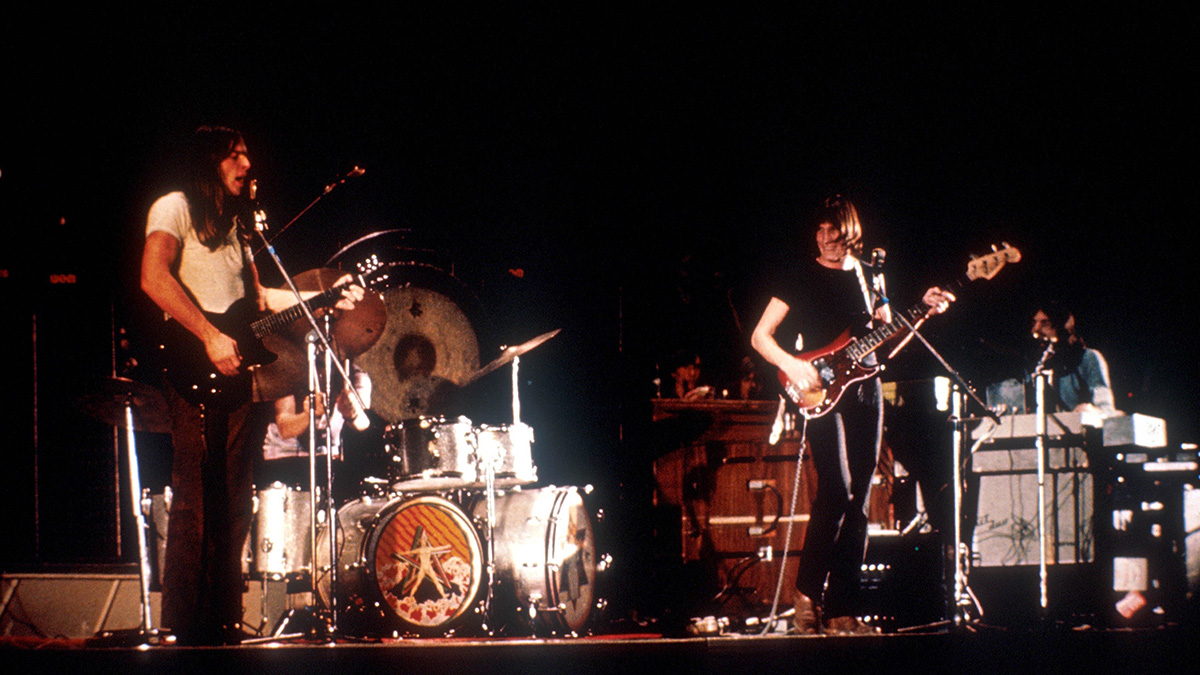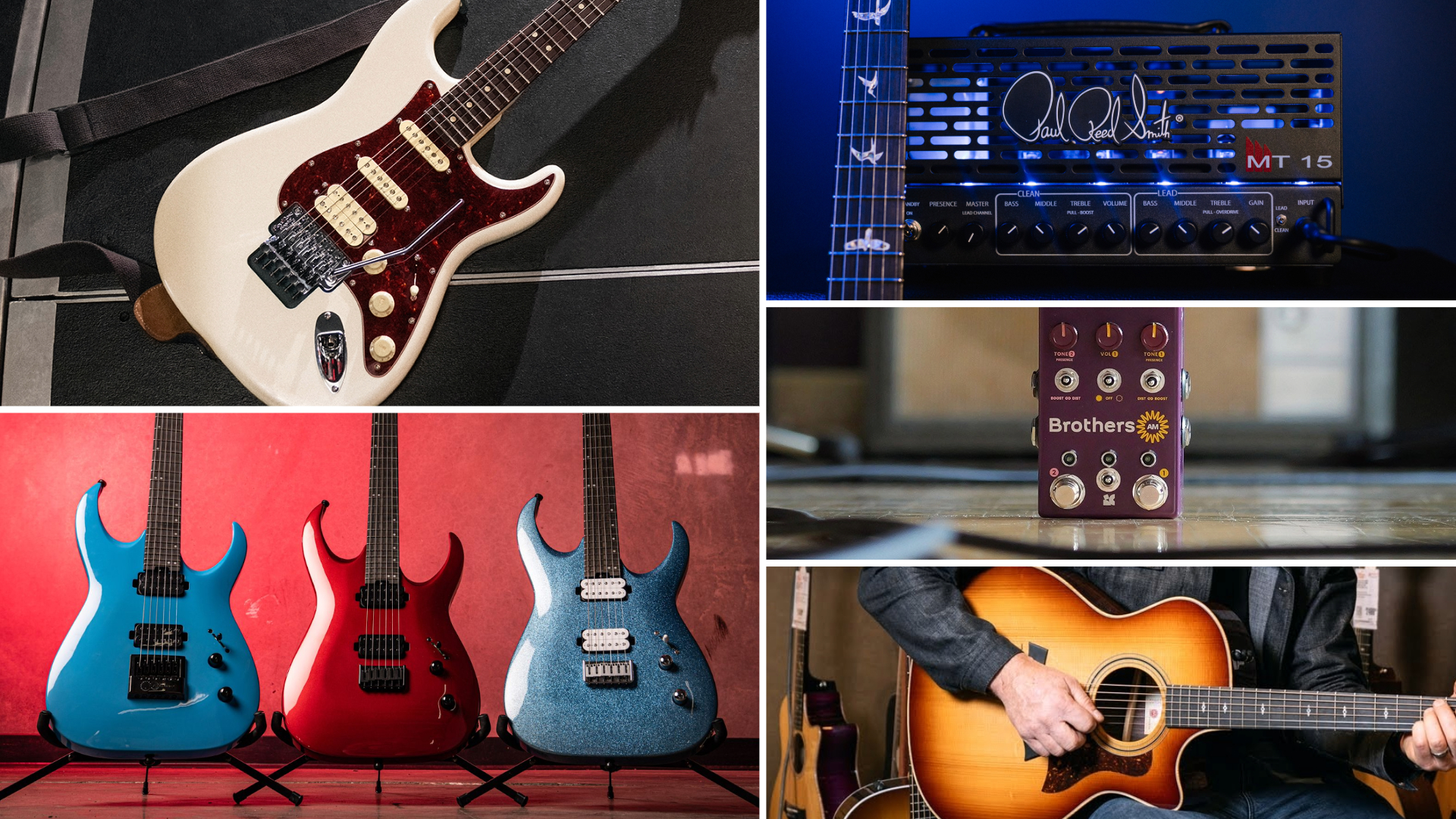Jazz Guitar Corner: Intro to Spread Triads for Guitar, Part 2

When learning to play guitar, many of us explore open-position triads, and maybe barre chords on the fifth- and sixth-string roots after that. But, while these shapes are essential to get under your fingers, triads can offer myriad different sounds if you take them out of their usual context and begin to expand them beyond the confines of a single octave.
In this lesson, you’ll learn how to raise the highest note of each inversion of any triad you are working on in order to produce a spread voicing for that given triad. Doing so will allow you to breathe new life into your chord work, using triads, while keeping to the familiar three-note harmonic sound at the same time.
Read more about spread triads in my GuitarWorld.com column “Intro to Spread Triads, Part 1.”
Raised 5th Spread Triads
Before we dig into taking these spread triads onto the fretboard, let’s check out exactly how these shapes are built, looking at each inversion of a C chord as an example.
To build these spread triads, you can take any inversion of a triad that you know, such as the three inversions of C below, and then raise the highest note of each triad by one octave to produce its related spread shape.
In the root position, this means raising the 5th by an octave. In the first inversion, you will be raising the root by an octave. Finally, in the second inversion you are raising the 3rd by one octave to produce the spread triad shape on the neck.
Get The Pick Newsletter
All the latest guitar news, interviews, lessons, reviews, deals and more, direct to your inbox!
Try a few of these shapes out before moving on to the minor, diminished and augmented versions presented below.

Major Spread Triads
The first shapes you can explore with the spread triad shapes in the previous example are major triads, 1-3-5. Here, you simply take any major triad or inversion that you know, then raise the highest notes in each shape by an octave to produce the related spread major triad.
Doing so will cause a few fingerings to be out of reach for some people, or at least tricky to play. So take your time with these shapes and work out the easier grips first, coming back to the hard, more spread-out shapes after that.

Minor Spread Triads
In order to build the next group of triads, you take the major shapes from the previous examples, 1-3-5, and lower the 3rd by a 1/2 step, forming a minor triad, 1-b3-5. From there you raise the highest note in each inversion to produce the minor version of the spread triad shapes that we saw in the previous major examples.
Though the b3 sometimes makes grabbing these shapes a bit easier than their major-triad cousins, don’t worry if you can’t grab all of these chords comfortably at first. Take your time and work out the shapes that come easy first, and explore the harder grips once you have those easier shapes under your fingers.

Diminished Spread Triads
In the next group of triads, we’ll be looking at Diminished Spread Triads on the fretboard. With this shape, you are taking a minor triad, 1-b3-5, and then lowering the 5th to produce a diminished triad, 1-b3-b5.
From there, you take the highest note of each shape and raise it by an octave to form the different inversions of the diminished spread triads, as seen below.
Because the 3rd and 5th are lowered in diminished triads, they tend to be the easiest to grab when applying the spread triad approach to these shapes. But again, if you have a hard time playing any of these shapes, just work out the ones that you can play, and come back to the other shapes down the road as you explore them further in your practice routine.

Augmented Spread Triads
The last group of fingerings we’ll look at in this lesson are Augmented Spread Triads.
Here, you are taking a major triad, 1-3-5, and raising the 5th to create an augmented triad, 1-3-#5. From there, you raise the highest note of any shape by an octave in order to produce the three inversions of augmented spread triads.
Because the 5th is raised, creating a larger interval between the root and 5th than in the major or minor triads, this can cause some fingering issues. So, try out the shapes below and see which ones you like, and can grab easily, and leave the other ones for later, or just focus on the ones you can play easily on the guitar when applying them to a tune or improvisation.

As you can see, simply by raising the 5th of any inversion on any triad you are playing, you can keep the sound of the underlying chord while breathing new life into your harmonic playing at the same time.
Do you have a question or comment on this article? Feel free to post any questions or comments in the COMMENT section below.
Matt Warnock is the owner of mattwarnockguitar.com, a free website that provides hundreds of lessons and resources designed to help guitarists of all experience levels meet their practice and performance goals. Matt lives in the UK, where he is a lecturer in Popular Music Performance at the University of Chester and an examiner for the London College of Music (Registry of Guitar Tutors).
Matt Warnock is the owner of mattwarnockguitar.com, a free website that provides hundreds of lessons and resources designed to help guitarists of all experience levels meet their practice and performance goals. Matt lives in the UK, where he teaches Skype guitar students all over the world, and is an examiner for the London College of Music (Registry of Guitar Tutors).









